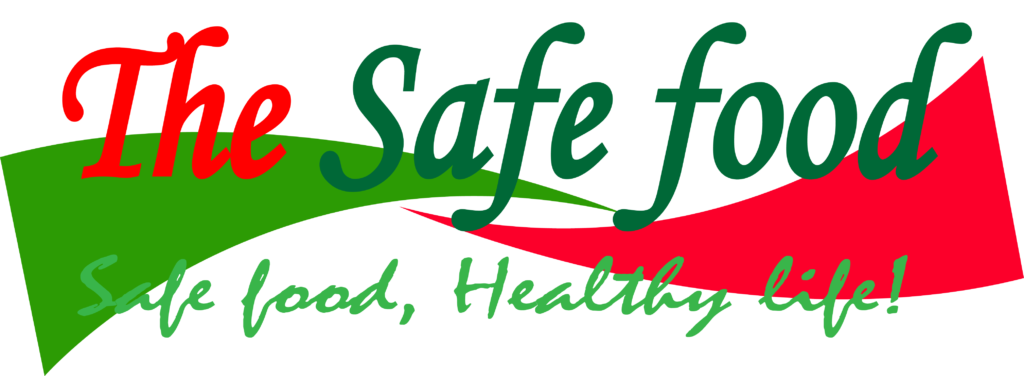What are street vended foods?
Street vended foods, also known as street food or street eats, are prepared and sold by vendors in open-air settings, typically on streets, sidewalks, or public areas. These foods are often ready-to-eat or require minimal preparation, making them convenient for consumers on the go. Street vended foods vary greatly across different cultures and regions, offering a wide range of flavors, ingredients, and cooking methods.
Examples of popular street foods around the world
Here are some examples of popular street vended foods from around the world:
- Tacos: A Mexican street food staple, tacos consist of tortillas filled with various ingredients such as grilled meat (e.g., carne asada, al pastor), seafood, beans, cheese, and salsa.
- Hot Dogs: Commonly found in many countries, hot dogs are sausages served in a sliced bun and topped with condiments like ketchup, mustard, onions, and relish.
- Kebabs: Popular in Middle Eastern and South Asian cuisines, kebabs are skewered and grilled meats, often served with pita bread, rice, salad, and sauces like tzatziki or chutney.
- Empanadas: These stuffed pastries are widely enjoyed in Latin American countries. They typically consist of a savory filling (meat, cheese, vegetables) enclosed in a dough pocket and then baked or fried.
- Bánh mì: Originating from Vietnam, bánh mì is a sandwich made with a crispy baguette filled with various ingredients like grilled meats (e.g., pork, chicken), pâté, pickled vegetables, cilantro, and chili sauce.
- Samosas: A popular street snack in South Asia and parts of Africa, samosas are deep-fried pastries filled with a savory mixture of potatoes, peas, and spices.

- Falafel: Commonly found in Middle Eastern cuisine, falafel is made from ground chickpeas or fava beans mixed with herbs and spices, formed into balls or patties, and deep-fried. It is often served in pita bread with tahini sauce and salad.
- Arepas: A staple in Colombian and Venezuelan cuisine, arepas are thick cornmeal patties that are grilled or fried and filled with various ingredients like cheese, meat, or beans.
- Pad Thai: A popular Thai street food dish, pad Thai consists of stir-fried rice noodles with ingredients like shrimp, tofu, egg, bean sprouts, peanuts, and lime.
- Pani Puri: A popular Indian street snack, pani puri involves small, crispy hollow puris filled with a mixture of flavored water, tamarind chutney, spiced potatoes, chickpeas, and onions.
- Mutura – Mutura is a traditional African sausage that is popular in East Africa, particularly in Kenya. It is a unique and flavorful sausage with its own distinct characteristics and preparation methods.
Why are street vended foods a public health concern!
Street vended food can be a public health concern due to several reasons:
- Food Safety Practices: Street food vendors often operate in unregulated or informal settings, which may result in inadequate food safety practices. They may lack access to clean water, proper sanitation facilities, and refrigeration, leading to increased risks of contamination and foodborne illnesses.
- Contamination Risks: Street vended food is exposed to various sources of contamination. Vendors may handle food with dirty hands, use unclean utensils or equipment, or store food in unsanitary conditions. Additionally, the ingredients themselves may be contaminated, such as raw produce washed with contaminated water.
- Improper Temperature Control: Proper temperature control is crucial for preventing the growth of bacteria in food. Street food vendors often lack refrigeration or may not have the means to monitor and maintain appropriate food temperatures. This can lead to the proliferation of harmful bacteria and increase the risk of foodborne illnesses.
- Cross-Contamination: Inadequate separation between raw and cooked foods can result in cross-contamination. For example, using the same cutting board or utensils for raw meat and ready-to-eat foods can transfer harmful pathogens and cause foodborne illnesses.

- Lack of Food Allergen Information: Street vended food may not provide clear information about potential allergens present in the food, which can be problematic for individuals with food allergies. This can lead to accidental consumption of allergens and severe allergic reactions.
- Limited Oversight and Regulation: Street food vendors are often subject to limited regulatory oversight compared to established food establishments. This lack of regulation may result in a lack of proper training, poor hygiene practices, and insufficient monitoring of food safety standards.
- Public Health Implications: Contaminated street vended foods can cause foodborne illnesses, which can range from mild gastrointestinal discomfort to severe illnesses and even death. These illnesses can not only affect individuals who consume the food but also pose a risk to public health if there is a widespread outbreak.
Food safety knowledge is for all!

Every consumer deserves to have high quality and safe food. …Read more!

How can street food vendors ensure food quality and safety?
Street food vendors can take several measures to ensure food quality and safety. Here are some important steps they can follow:
- Hygiene and Sanitation: Maintain high standards of personal hygiene by washing hands frequently with soap and clean water. Use disposable gloves when handling food and change them regularly. Keep the food preparation area clean and sanitized, including utensils, cutting boards, and cooking surfaces.
- Safe Water and Ingredients: Ensure the use of safe and clean water for food preparation, including washing produce and utensils. Source ingredients from reputable suppliers to minimize the risk of contamination. Wash fruits and vegetables thoroughly before use.
- Temperature Control: Proper temperature control is crucial to prevent the growth of harmful bacteria. Keep hot foods hot (above 140°F or 60°C) and cold foods cold (below 40°F or 4°C). Use appropriate equipment to maintain and monitor food temperatures, such as insulated containers, ice packs, or refrigeration where possible.
- Cooking and Reheating: Cook food thoroughly to appropriate internal temperatures to kill bacteria and other pathogens. Use a food thermometer to ensure proper cooking. Avoid reheating food multiple times, as this can promote bacterial growth. Serve food immediately after cooking or keep it hot above the recommended temperature.
- Cross-Contamination Prevention: Separate raw and cooked foods to prevent cross-contamination. Use separate cutting boards, utensils, and storage containers for raw and cooked foods. Avoid using the same oil or cooking liquid repeatedly, as it can lead to cross-contamination.
- Proper Food Storage: Store ingredients and prepared foods properly to maintain freshness and prevent spoilage. Use suitable containers that are clean and food-grade. Label and date foods to ensure proper rotation and avoid using expired ingredients.
- Display and Serving Practices: Protect food from dust, insects, and other contaminants by using food covers or containers. Keep ready-to-eat foods covered until served. Use clean and sanitized utensils for serving and avoid direct hand contact with food. Encourage customers to dispose of food waste properly.
- Training and Education: Ensure that all staff members receive proper training on food handling, hygiene practices, and food safety regulations. Regularly update their knowledge on best practices and ensure they understand the importance of maintaining food quality and safety.
- Regular Inspections and Monitoring: Conduct self-inspections to identify any potential risks or areas for improvement. Monitor food quality and safety practices consistently and address any issues promptly. Cooperate with local health authorities and comply with applicable regulations and guidelines.
- Customer Communication: Provide clear and accurate information about ingredients, allergens, and potential risks associated with the food. Encourage customers to ask questions and address any concerns they may have.
By implementing these practices, street food vendors can enhance food quality and safety, build customer trust, and contribute to the overall health and well-being of their consumers.
What is the role of the government in assuring street food quality and safety
The government plays a crucial role in assuring street vended foods quality and safety through regulatory oversight, enforcement, and support. Here are some key ways in which the government contributes to ensuring street food safety:
- Legislation and Regulations: Governments establish laws, regulations, and standards specifically focused on food safety, including those related to street food vendors. These regulations define the requirements for food handling, hygiene practices, licensing, and operational standards that street food vendors must adhere to. They provide a framework for ensuring food safety and set the minimum standards that vendors must meet.
- Licensing and Permits: Governments issue licenses and permits to street food vendors after assessing their compliance with food safety regulations. Licensing ensures that vendors have undergone necessary training, possess appropriate facilities, and follow approved practices. Regular inspections may be conducted to monitor compliance and renew licenses.
- Inspections and Monitoring: Government agencies conduct routine inspections of street food vendors to assess their compliance with food safety regulations. Inspections focus on hygiene practices, food handling, temperature control, cleanliness of premises and equipment, and compliance with labeling and allergen requirements. Regular monitoring helps identify risks, prevent foodborne illnesses, and ensure vendors maintain safe practices.
- Training and Education: Governments may provide or facilitate training programs and educational resources to street food vendors. These initiatives educate vendors on proper food handling techniques, personal hygiene, temperature control, and other critical food safety practices. Training helps vendors understand and implement regulations, ensuring they have the knowledge and skills to maintain food safety standards.
- Food Safety Information: Governments disseminate information on food safety regulations, guidelines, and best practices to street food vendors. This includes information on proper food handling, storage, preparation, and allergen control. Providing accessible and accurate information helps vendors understand their responsibilities and make informed decisions about food safety.
- Collaboration and Partnership: Government agencies collaborate with other stakeholders, including local health departments, industry associations, and consumer organizations. These partnerships facilitate information sharing, exchange of best practices, and joint initiatives to enhance street food safety. Collaboration ensures a coordinated approach and promotes effective regulation and enforcement.
- Enforcement and Penalties: Governments enforce food safety regulations by taking appropriate actions against non-compliant vendors. This may involve issuing warnings, fines, suspensions, or revocation of licenses in cases of serious violations. Enforcement measures create accountability, incentivize compliance, and protect public health.
- Research and Development: Governments support research and development initiatives related to food safety. This includes studying emerging risks, developing new technologies for food safety monitoring, and evaluating the effectiveness of regulations and interventions. Research findings inform policy decisions, enhance knowledge, and promote continuous improvement in street food safety.
- The integration of street vending into the design of modern cities: This can bring numerous benefits by fostering vibrant street life, supporting local economies, and providing diverse food options for residents and visitors.
Why it is important to integrate street vending into the design of modern cities.
The integration of street vending into the design of modern cities can bring numerous benefits by fostering vibrant street life, supporting local economies, and providing diverse food options for residents and visitors. Here are some considerations for integrating street vending into the design of streets:

- Designated Vending Spaces: Designate specific areas or zones within the urban fabric for street vending activities. These spaces can be integrated into the overall street design, ensuring that they are well-positioned and easily accessible for both vendors and customers. The design should consider factors such as foot traffic, visibility, and safety.
- Infrastructure and Utilities: Provide necessary infrastructure and utilities to support street vending operations. This includes amenities like designated stalls or kiosks, access to electricity for cooking or refrigeration, proper waste disposal facilities, and clean water sources. Designing streets with these considerations helps ensure the smooth operation of street vending activities while maintaining hygiene and safety standards.
- Pedestrian-Friendly Spaces: Create pedestrian-friendly streets that accommodate both vending activities and the movement of people. Design streets with wider sidewalks, pedestrian plazas, seating areas, and adequate lighting. This allows for comfortable browsing and dining experiences for customers while minimizing disruptions to pedestrian flow.
- Flexibility and Adaptability: Design street vending spaces to be flexible and adaptable. This allows for different types of vendors and products to operate in the same area. Incorporate modular structures or movable elements that can be adjusted or reconfigured to accommodate varying vending needs and seasonal changes.
- Integration with Public Transport: Consider the integration of street vending spaces with public transport hubs or transit-oriented developments. This creates opportunities for vendors to serve commuters and pedestrians, enhancing the overall street experience and providing convenient food options for travelers.
- Aesthetics and Visual Appeal: Pay attention to the aesthetics of street vending spaces to enhance the visual appeal of the urban environment. Use creative design elements, attractive signage, and landscaping to create an inviting atmosphere. This can contribute to a vibrant and lively street scene that attracts both locals and tourists.
- Safety and Security: Prioritize safety and security measures in the design of street vending spaces. This may include appropriate lighting, surveillance cameras, and pedestrian-friendly traffic management strategies. Collaboration with local law enforcement and urban planning departments can help ensure the safety of vendors and customers.
- Stakeholder Engagement: Involve street vendors, local communities, urban planners, and business associations in the design process. Seek input from vendors to understand their needs, challenges, and preferences. Engaging stakeholders ensures that the design of street vending spaces aligns with the aspirations and requirements of the local community.
By integrating street vending into the design of streets, cities can promote economic opportunities, cultural diversity, and social interactions while maintaining a well-planned and orderly urban environment. Thoughtful design considerations can contribute to the success and sustainability of street vending activities, making cities more vibrant and inclusive.
Our Blog ↗
Read the latest from our blog
Ask a Question ↗
Ask a question and get answers from our community
Give Feedback ↗
We value your feedback.


